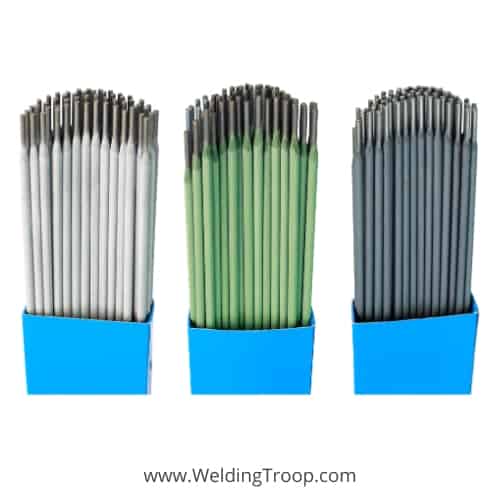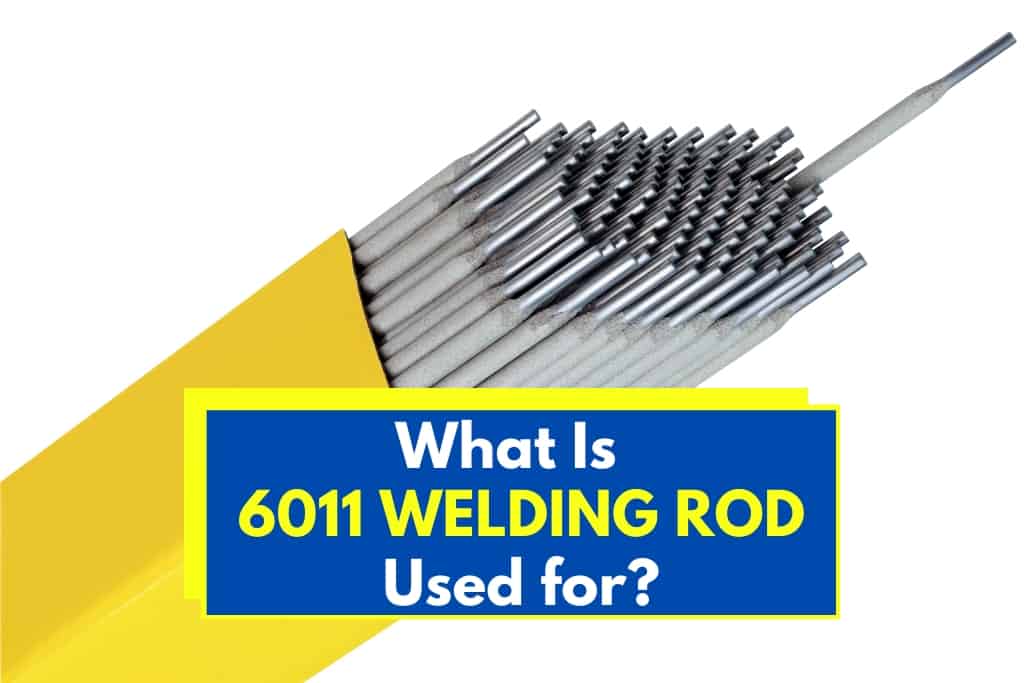One of the most common welding rods is 6011. You will encounter it in a variety of situations. However, it’s hard to be sure if 6011 is the best choice for the job you have at hand.
Which jobs are 6011 rods good for, and which jobs call for a different rod? The 6011 welding rod is useful for jobs that require deep penetration, no matter the position or welder setup. It is a solid all-around welding rod. Because it is an iron rod, it is useful for most kinds of iron and mild steel.
You can handle just about anything with 6011 rods. Some of the useful aspects of 6011 rods are:
- Penetrates rust, paint, dirt, and other surface contamination
- Works with AC, DC+ and DC- welders
- Welds flat, vertical, overhead, and horizontal welds
- Cools quickly and leaves a durable bead
Let’s explore each of these in more detail.
Table of Contents
How Do You Know What It’s Good For?
While the numbers used to designate welding rods seem random, they convey meaning. The numbers are a code that describes various attributes of the rod. Once you understand the numbering system, you can learn a lot about the rod.
- The first two digits tell the tensile strength of the weld in thousands of pounds. The “60” in 6011 lets you know that the final weld will have a strength of sixty thousand pounds.
- The third digit tells the positions the rod can be used in. “1” is for all position rods. You can weld horizontal or vertical with 6011. (A rod with a “2” in the third position is only suitable for flat welds.)
- The last two digits together tell the type of flux coating on the rod. The flux type determines what current will work with the rod. “11” is a high-cellulose potassium coating. It’s useful for any type of current – AC, DC+ and DC-. Make sure to match the rod to your welder’s capabilities. If the rod does not work with the current you have available, you will not get good welds.
Learn More About Welding Rods – Here, you can find an article from our website about: Different Types of Welding Rods and Their Uses
Different fluxes also have different penetration abilities. The high-cellulose potassium flux on a 6011 rod produces deep penetration into the weld. This penetration is useful when you are welding metal that is not pristine. 6011 rods are popular for making repairs on cars, engines, farm equipment, and other items that are greasy, rusty, and dirty.
Polarity
Arc welding is most often performed with direct current using the rod as the negative electrode; this is referred to as DC- or straight polarity welding. Some situations call for using the rod as the positive electrode, called DC+ or reverse polarity welding. Alternating current (AC) is found in inexpensive “cracker box” welders. AC is also useful for welding extremely dirty or rusty stock. Some rods only work with one or two polarities. You need to match the rod to the polarity.
6011 rods work with any polarity. Whether you have a cracker box, DC-, or a high-end machine that can handle different polarities, 6011 will work. If your welder lets you choose which polarity to run, you can adjust your setup but use the 6011 rods. This is one less variable to worry about when you set up a project.
Rod Thickness
Welding rods come in different thicknesses. The most common sizes are 3/32, 1/8, and 5/32 of an inch, though rods up to ¼ inch are available. The rod diameter needed increases with the thickness of the stock you are welding; thicker rods offer deeper penetration for heavy-weight steel. However, thick rods require higher amperage to work. Consult the manual for your welder for the best settings for your project.
The most useful rod diameters are 3/32 and 1/8. The thinnest rods are used for lightweight stock and small welds like expanded metal. Eight-inch rods are a handy all-around rod for most projects. You won’t need 5/32 rods unless you are welding the heaviest metal – it’s for material with a thickness of half an inch or more. Most home welders will not need to work on projects that heavy.
Storing 6011 Rods
It is always best to store welding rods sealed in the original packaging. Some rods are damaged by moisture in the air. These rods must be stored in an oven at 250 degrees after they are out of the packaging. Oven storage is needed for 7018 and specialty rods for stainless and cast iron.
That is not the case for 6011. It can be stored at room temperature in a dry environment. Avoid wetting your 6011 rods, and they will be ready to go whenever you are.
Related Reading: This Is Why Welding Rods Need to Be Heated
When to Avoid 6011 Rods
The versatility comes with a few drawbacks. 6011 rods leave a rougher bead than some other rods; if you want a pretty bead, 6011 is not the best choice. When you make very wide fillet welds with 6011 rods, the weld is prone to cracking. You should either use a slower-cooling rod or make two passes when fillet welding.
The deep penetration of 6011 rods makes them hard to use with sheet metal. It’s easy to burn holes with 6011 rods; there are better choices for thin stock. Finally, 6011 rods can be hard to strike and control. Novice welders sometimes struggle to keep these rods from sticking to the bead.
Do not use 6011 rods for stainless steel or non-ferrous metals. Aluminum, copper, titanium, stainless steel, and similar metals are best welded with a TIG welder using a filler rod of the same metal as the base. Stick welders with iron rods will not work on those items.
Alternate Rod Choices
If you have a project that requires a rod to do things the 6011 rods can’t, there are other options. Here are the best rods to cover the weaknesses of 6011:
If the appearance of the weld is important to you, choose 7018 rods. These rods are known for producing the smoothest bead of any stick welding material. If the appearance of the bead is vital, you might check out TIG welding instead. It’s a different process, but it produces the prettiest welds.
When you need to make a fillet weld with a broad joint, 7024 is the best rod. 7024 makes a puddle that flows well and cools slowly. This type of puddle will fill the joint in a single pass without cracking. However, 7024 rods require high amperage and only work on horizontal or flat welds.

If you are welding sheet metal or other thin stock, opt for 6012 or 6013. These rods don’t penetrate as deeply, so you can avoid burning holes in your project.
Lastly, if you need the flexibility of 6011 rods in an easier to use package, check out 6013 rods. While they do not penetrate like 6011, 6013 rods are known for being easy to use and seldom sticking. These are great practice rods to use while you get your bearings as a welder.
How to Pick a Welding Rod >> Check out the video below
Great All-Around
No matter what kind of arc welding you do, 6011 rods will work. No matter what type of arc welder you have, no matter what position you must work in, these rods will get the job done. They are particularly handy for welders who perform lots of repairs on cars, farm equipment, and other materials that are dirty. And since they store at room temperature, you can stock up on 6011 rods without worrying about the rods going bad.
Whether you are a weekend welder, a repair tech in a mechanic’s shop, or an all-around fabricator, 6011 rods have a place in your shop. Grab a few pounds of 6011 the next time you are at the welding shop – you will be glad to have them around.
Recommended Reading
Do Welding Electrodes Have a Shelf Life?| Electrodes Expiry
What Welding Rod to use for Cast Iron? | Guidelines for Welding Cast Iron
Here are some of my favorite tools & equipment´s
Thank you for reading this article. I hope it helps you find the most recent and accurate information for your welding project. Here are some tools that I use daily and hope you´ll also find helpful.
There are affiliate links, so if you do decide to use any of them, I´ll earn a small commission. But in all honesty, these are the exact tools that I use and recommend to everyone, even my own family. (NO CRAP)
To see all my of most up-to-date recommendations, check out this resource that I made for you!


